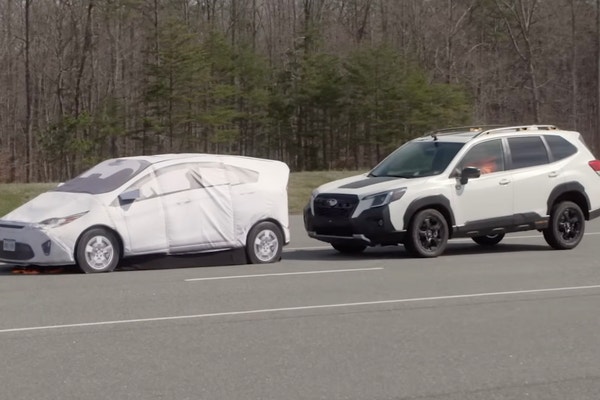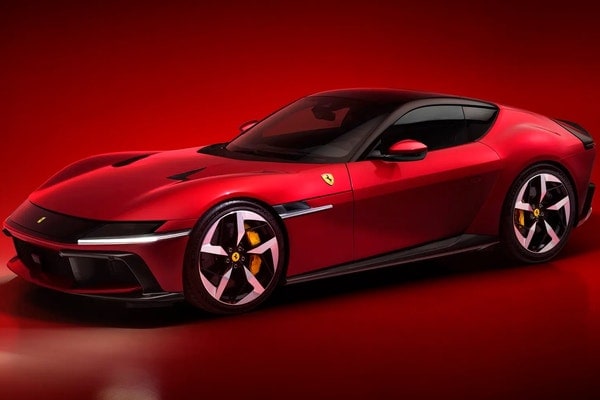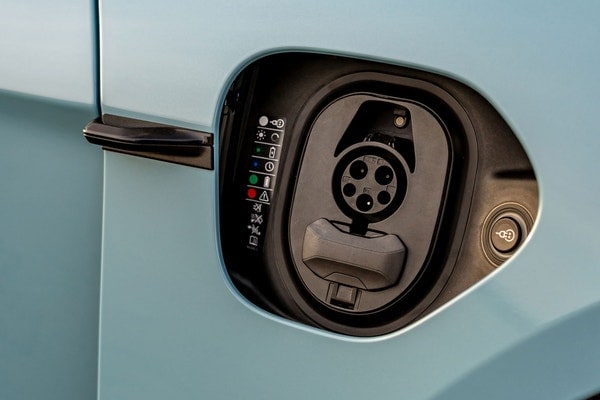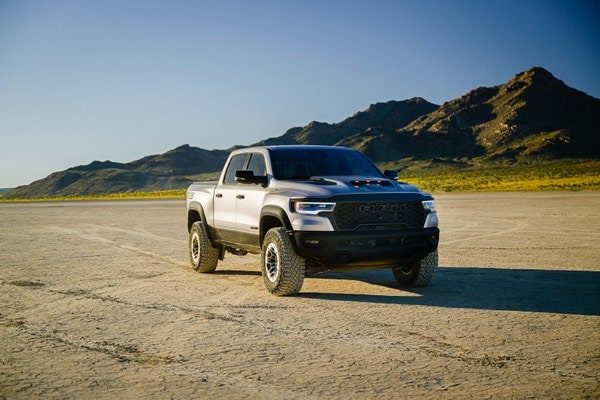Used 2015 Ford Transit Connect Wagon XLT Minivan Review
Consumer reviews
There are no consumer reviews for the 2015 Ford Transit Connect Wagon XLT Minivan.
Edmunds Summary Review of the 2015 Ford Transit Connect Wagon XLT Minivan
Pros & Cons
- Pro:Punchy and efficient turbocharged engine
- Pro:two available body lengths
- Pro:customizable cargo area
- Pro:less expensive and more involving to drive than regular minivans.
- Con:Turbo engine unavailable on long-wheelbase wagon
- Con:second row doesn't slide or recline
- Con:limited payload and towing capacities
- Con:unimpressive mpg with base engine.
Full Edmunds Review: 2015 Ford Transit Connect Minivan
What’s new
Apart from minor equipment updates, the 2015 Ford Transit Connect carries over unchanged from last year.
Edmunds says
The compact, front-wheel-drive 2015 Ford Transit Connect may be a bit more focused on utility than comfort, but it's a smart choice for families and small business owners seeking a less costly, more maneuverable alternative to a full-size van or larger minivan.
Vehicle overview
Outside the United States, small vans are some of the most popular vehicles in existence. That's no surprise, of course, since these vehicles are easy to maneuver on crowded, narrow streets, capable of hauling an amazing amount of gear and far more fuel-efficient than the behemoth cargo vans that have dominated American roads for decades. Now that Ford is offering its compact Transit Connect cargo van and passenger wagon in the U.S., families and small-business owners wanting a van with a smaller footprint have an excellent alternative to consider.
If you're looking for a small, affordable business solution, the 2015 Ford Transit Connect has a lot to offer. It comes in several different configurations with two available wheelbases and two available fuel-efficient engines. Ford has pre-drilled holes to allow for easy setup of shelving and storage units, and if you have a lot of cargo, the Transit Connect can haul up to 1,600 pounds or tow up to 2,000 pounds. That's not much compared with more traditional rear-drive cargo vans (including Ford's full-size Transit Van), but for smaller businesses, this might be just enough capability. Plus, even when carrying a full load, the Transit Connect feels agile and easy to maneuver.
For families needing to carry people instead, the passenger version, known as the 2015 Ford Transit Connect wagon, is also pretty useful. It can seat five or seven, depending on which wheelbase you select, and headroom and legroom are plentiful, even for adults. It's a great option if space and affordability are your priorities, but compared with more conventional minivans, the Transit Connect is bound to feel a bit bare-bones whether you're looking at its so-so interior plastics or its relatively modest list of amenities.
Of course, if you're comparing the 2015 Ford Transit Connect van with larger cargo vans like the 2015 Chevrolet Express and Ford's own Transit (reviewed separately), its sacrifices in power, space and overall capability are undeniable. The Transit's more direct competitors are the 2015 Nissan NV200 and 2015 Ram CV Tradesman. The Grand Caravan-based CV offers a more powerful V6, but isn't as compact in its dimensions. The NV200 actually feels even more basic on the inside than the Connect but is still worth a look.
Meanwhile, top minivans like the 2015 Honda Odyssey and Toyota Sienna are far more comfortable and spacious than the 2015 Transit Connect wagon, but they're also quite a bit larger and more expensive. The Mazda 5 offers much the same attributes as the Transit Connect, but it, too, does without some desirable features (and will be discontinued after the 2015 model year). For families willing to give up some capability and versatility, the Ford Transit Connect's lower price tag and sharper driving dynamics are bound to be appealing.
2015 Ford Transit Connect models
The 2015 Ford Transit Connect is a compact commercial minivan that's offered in cargo van and passenger van (wagon) body styles and two different wheelbases. All versions have dual sliding rear doors and give you a choice between swing-out cargo doors and an overhead liftgate. There are three available trim levels: XL, XLT and Titanium (wagon only). The XLT wagon seats five or seven, depending on which wheelbase you select, while seven-passenger seating is standard on the XL and Titanium.
Base standard equipment on the XL cargo van includes 16-inch steel wheels, gray grille/bumpers/side moldings, keyless entry, air-conditioning, vinyl upholstery and floor coverings, built-in cargo tie-down hooks, an overhead storage shelf, a fold-flat front passenger seat, a tilt-and-telescoping steering wheel, power front windows, power door locks and a two-speaker sound system with an auxiliary audio input jack. The XL wagon version comes with the same standard equipment, but is long-wheelbase only and adds second- and third-row seats, two rear speakers for the stereo, rear climate controls and power second-row windows.
Stepping up to the XLT cargo van gets you body-color bumpers, foglights, power-adjustable heated mirrors, rear privacy glass, cloth upholstery, driver lumbar adjustment, a passenger vanity mirror, a 4.2-inch multifunction display, cruise control and a CD player. The XLT wagon comes in short- or long-wheelbase form, mirrors the XLT cargo's equipment and adds a rearview camera and a thicker acoustic windshield. Rear climate controls aren't available on the short-wheelbase XLT wagon.
The top-of-the-line Titanium wagon adds 16-inch alloy wheels, automatic headlights, adaptive cornering foglights, rain-sensing wipers, power-folding mirrors, chrome exterior trim, dual-zone automatic climate control, leather upholstery, a six-way power driver seat, heated front seats, an auto-dimming rearview mirror with a built-in compass, a locking glovebox, four front speakers for the sound system and Ford's voice-controlled Sync system.
Many of the features that come standard on the upper trim levels are also available on other models. Other major options include 16- and 17-inch alloy wheels, a compressed natural gas engine prep package, front and rear parking sensors, a towing package, a fixed panoramic sunroof, a roof rack, satellite/HD radio, the MyFord Touch electronics interface (includes a 6.5-inch touchscreen display and a navigation system) and the Crew Chief telematics system designed for fleet operators.




Performance & mpg
For power, the 2015 Ford Transit Connect gets a choice of two engines. A 2.5-liter four-cylinder engine comes standard, and produces 169 horsepower and 171 pound-feet of torque. A turbocharged 1.6-liter four-cylinder good for 178 hp and 184 lb-ft of torque is available as an option on select variants (oddly, the long-wheelbase wagon is not one of them). Both engines send power to the front wheels by way of a six-speed automatic transmission.
The EPA's estimated fuel economy for the cargo van with the 2.5-liter engine is 24 mpg combined (21 city/29 highway). The wagon is rated lower, at 23 mpg combined (20/28), which is only barely better than you'd get with a larger V6-equipped minivan. Opting for the turbocharged 1.6-liter engine gets you an estimated 25 mpg combined (22/30) with both the cargo van and the wagon.
Safety
Standard safety features on the 2015 Ford Transit Connect include antilock brakes, traction and stability control, hill start assist, front seat side airbags and side curtain airbags.
Front and rear parking sensors and a rearview camera are available as options. The optional Ford Sync system includes an emergency crash notification feature that automatically dials 911 when paired with a compatible cell phone. Ford's MyKey system, which can be used to set certain parameters for various drivers (think teens, valets or employees), is also optional.
In government crash tests, the 2015 Ford Transit Connect wagon was given five out of five stars for overall crash protection (the cargo van is unrated in the overall category). Both versions received four stars for frontal crash protection and five stars for side crash protection.
Driving
This little van's biggest party trick is the way it drives. Even if the 2015 Ford Transit Connect lacks the get-up-and-go of V6-powered traditional minivans, it still feels much lighter and more agile around town, which is equally useful for large families and delivery drivers needing to get in and out of tight spaces. If you live in the city or frequently travel on tight rural roads, the Transit Connect will feel like an athlete compared with a Honda Odyssey and almost nothing like a Chevy Express. We recommend getting the punchier and more efficient turbocharged engine, but unfortunately, it isn't available on seven-passenger wagon models.
The steering in particular is worthy of praise, offering the same sort of just-right effort and impressive road feel found in other Ford vehicles. On the other hand, the ride is bumpy over rough road surfaces, and noises tend to make their way into the cabin much like they would on a smaller, sportier vehicle. That'll be just fine for those transitioning from something like a Focus, but current minivan drivers may find the suspension does not provide the suppleness and isolation they've come to expect.
Interior
With its passenger (wagon) and cargo van body styles, the Transit Connect can serve a variety of purposes. The wagon -- specifically the seven-passenger long-wheelbase model -- can be used as a family vehicle. Granted, the second-row seat doesn't recline or slide, and folding both the second and third rows of seats takes an extra step compared with most minivans, but space in both rows is just as good (and sometimes better), especially the headroom. The quality of plastics isn't up to Ford's current top-notch standards, but it's not objectionable, and the Titanium trim's leather upholstery and advanced technology should please its owners at a price point that significantly undercuts similarly priced rivals.
If it's cargo you're looking to haul, the short-wheelbase cargo van offers 103.9 cubic feet behind the front seats, while the long-wheelbase version's larger cargo hold can swallow 128.6 cubic feet. This is less than a regular minivan, but still much better than a large crossover. Even more capacity is available thanks to the fold-flat front passenger seat. If the seats are folded, the wagon offers a maximum of 77.1 cubic feet with the short wheelbase and 104.2 cubic feet with the long wheelbase.
Although the Transit Connect has a much larger windshield and dashboard than its Ford siblings, it could just as easily be a Ford Escape or C-Max from the driver seat. The interesting, quasi-futuristic design is virtually identical, with climate controls below clearly separated from the infotainment controls above. The optional MyFord Touch system has received its fair share of complaints for its usability and electronic glitches, but these have mostly been corrected with software updates, and MyFord Touch is now easier to use than in years past. The same can't be said, however, for the standard stereo interface, which consists of a small central screen controlled by many buttons.
Behind the driver, however, things get considerably different -- and vary considerably depending on the wheelbase and whether you're carrying people or cargo. The XL cargo van, for example, is a bare-bones workhorse with vinyl upholstery and floor coverings with mounting points for customizable shelves and whatever a business might need. Upper trim levels add creature comforts, but the van is still very much a dedicated work vehicle.
Edmunds Insurance Estimator
The Edmunds TCO® estimated monthly insurance payment for a 2015 Ford Transit Connect in Ohio is:
not availableRelated Used 2015 Ford Transit Connect Wagon XLT Minivan info
Recent automotive news
- 2025 Genesis GV80 Pricing Announced: Want a V6? It'll Cost You $75,000
- Taking Chargers to School: Rivian Will Now Grade Public Charging Stations
- Toyota Camry vs. Honda Accord vs. Hyundai Sonata: Hybrid Sedan Head-to-Head
- 2024 Chevy Traverse First Drive: Big Improvements Everywhere Except the Interior
- CarCast+Edmunds Podcast: Do A Trio of New Vehicles "Electrify" The Market?
- 2025 Hyundai Ioniq 5 N Tested: GT3 Quick and Still Beat Its EPA Range
- Cadillac and Stellantis Backtrack on 2030 EV Goals
- Harder IIHS Crash Prevention Test Means Your Family's Car Gets Safer
- 2024 Acura ZDX First Drive: Like a 500-HP Lounge
- The Toyota Tacoma's In-Dash Speaker Is an Industry First
Popular new car reviews and ratings
- Audi RS 5
- Toyota Corolla Hybrid For Sale
- Mclaren 720S Spider Price
- Car RS6
- Aston Martin Martin DB11
- GMC Sierra 1500 Limited
- Electric Fiats
- 2025 Audi RS 3 News
- Ford F450
- Mercedes Benz Metris Vans
Lease deals by make
- Audi Lease Deals
- Ford Lease Deals
- Chevrolet Lease Deals
- Genesis Lease Deals
- GMC Lease Deals
- Buick Lease Deals
- BMW Lease Deals
- Cadillac Lease Deals
- Hyundai Lease Deals
- Honda Lease Deals